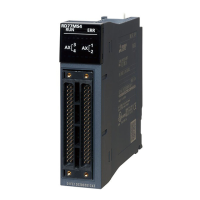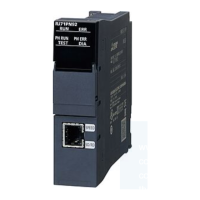4 HIGH-LEVEL POSITIONING CONTROL
4.1 Outline of High-level Positioning Control
143
4
4 HIGH-LEVEL POSITIONING CONTROL
The details and usage of high-level positioning control (control functions using the "block start data") are explained in this
chapter.
High-level positioning control is used to carry out applied control using the "positioning data". Examples of applied control are
using conditional judgment to control "positioning data" set with the major positioning control, or simultaneously starting
"positioning data" for several different axes.
Read the execution procedures and settings for each control, and set as required.
4.1 Outline of High-level Positioning Control
In "high-level positioning control" the execution order and execution conditions of the "positioning data" are set to carry out
more applied positioning. (The execution order and execution conditions are set in the "block start data" and "condition data".)
The following applied positioning controls can be carried out with "high-level positioning control".
*1 "1 block" is defined as all the data continuing from the positioning data in which "continuous positioning control" or "continuous path
control" is set in the "[Da.1] Operation pattern" to the positioning data in which "independent positioning control (Positioning complete)"
is set.
*2 Besides the simultaneous start of "block start data" system, the "simultaneous starts" include the "multiple axes simultaneous start
control" of control method. Refer to the following for details.
Page 23 Multiple axes simultaneous start
High-level positioning control sub functions
"High-level positioning control" uses the "positioning data" set with the "major positioning control". Refer to the following for
details on sub functions that can be combined with the major positioning control.
MELSEC iQ-R Simple Motion Module User's Manual (Startup)
Note that the pre-reading start function cannot be used together with "high-level positioning control".
High-level positioning control Details
Block
*1
start (Normal start) With one start, executes the positioning data in a random block with the set order.
Condition start Carries out condition judgment set in the "condition data" for the designated positioning data, and then executes the
"block start data".
• When the condition is established, the "block start data" is executed.
• When not established, that "block start data" is ignored, and the next point's "block start data" is executed.
Wait start Carries out condition judgment set in the "condition data" for the designated positioning data, and then executes the
"block start data".
• When the condition is established, the "block start data" is executed.
• When not established, stops the control until the condition is established. (Waits.)
Simultaneous start
*2
Simultaneously executes the positioning data having the No. for the axis designated with the "condition data".
(Outputs command at the same timing.)
Repeated start (FOR loop) Repeats the program from the "block start data" set with the "FOR loop" to the "block start data" set in "NEXT" for the
designated number of times.
Repeated start (FOR condition) Repeats the program from the "block start data" set with the "FOR condition" to the "block start data" set in "NEXT"
until the conditions set in the "condition data" are established.

